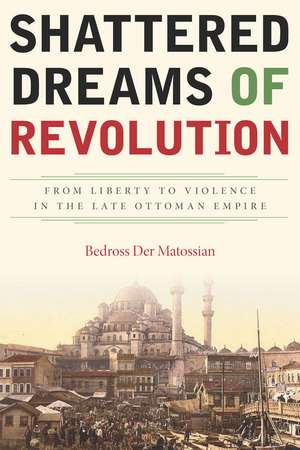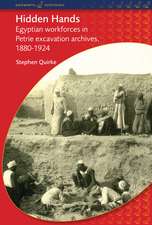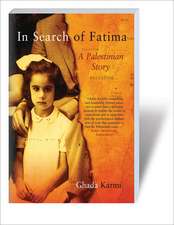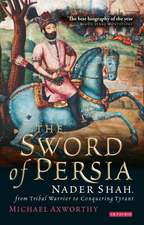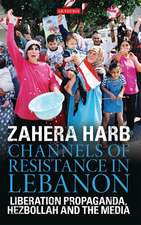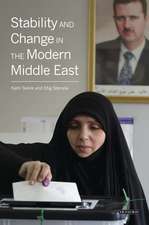Shattered Dreams of Revolution: From Liberty to Violence in the Late Ottoman Empire
Autor Bedross Der Matossianen Limba Engleză Paperback – 14 oct 2014
The undoing of the revolutionary dreams could be found in the very foundations of the revolution itself. Inherent ambiguities and contradictions in the revolution's goals and the reluctance of both the authors of the revolution and the empire's ethnic groups to come to a compromise regarding the new political framework of the empire ultimately proved untenable. The revolutionaries had never been wholeheartedly committed to constitutionalism, thus constitutionalism failed to create a new understanding of Ottoman citizenship, grant equal rights to all citizens, and bring them under one roof in a legislative assembly. Today as the Middle East experiences another set of revolutions, these early lessons of the Ottoman Empire, of unfulfilled expectations and ensuing discontent, still provide important insights into the contradictions of hope and disillusion seemingly inherent in revolution.
| Toate formatele și edițiile | Preț | Express |
|---|---|---|
| Paperback (1) | 171.22 lei 3-5 săpt. | |
| Stanford University Press – 14 oct 2014 | 171.22 lei 3-5 săpt. | |
| Hardback (1) | 645.51 lei 6-8 săpt. | |
| Stanford University Press – 14 oct 2014 | 645.51 lei 6-8 săpt. |
Preț: 171.22 lei
Nou
32.77€ • 34.08$ • 27.05£
Carte disponibilă
Livrare economică 25 martie-08 aprilie
Specificații
ISBN-10: 0804792631
Pagini: 264
Dimensiuni: 152 x 229 x 20 mm
Greutate: 0.36 kg
Editura: Stanford University Press
Colecția Stanford University Press
Recenzii
"[T]his book is an important contribution to research on the period following the Young Turk Revolution, which deserves our attention. It highly contributes to current discussions and surely will raise new ones."—Dr. Yuval Ben-Bassat, (in Hebrew) in Ha-Mizrah Ha-Hadash (New East)
"[N]o historian has approached the subject of non-dominant ethnic groups in such a comprehensive and multilingual manner as Der Matossian has done in this volume. His study of Ottoman Armenians, Arabs, and Jews in the immediate aftermath of the revolution outlines the complex nature of post-revolutionary politics and the lack of homogeneity within each of these groups . . . Highly recommended."—R.W. Zens, Choice
"Shattered Dreams of Revolution is a compelling work on the Ottoman revolution of 1908 and its shortcomings . . . [T]his work must be commended for presenting a fresh picture of the revolution as a key event that needs to be more fully studied for its repercussions on the collapse of the Ottoman Empire. This is a work that cannot be ignored by those studying late Ottoman history and in particular how nationalism impacted the empire's subjects."—Roberto Mazza, H-Net
"In Shattered Dreams of Revolution: From Liberty to Violence in the Late Ottoman Empire, historian Bedross Der Matossian addresses the fraught ethnic relations that played a significant role in the failure of the Ottoman constitutional experiment . . . Der Matossian has sought out primary sources—including newspapers, political communications, speeches, and religious sermons—which help to paint a picture of late Ottoman society unavailable in official repositories like the Ottoman Archives . . . Der Matossian's ambitious project breaks sharply from the 'microhistorical' approach employed by many scholars of the period . . . These parallels make Shattered Dreams of Revolution essential to a sober and honest understanding of the Middle East in the 20th century—and in the 21st."—Sam Taylor, Business Insider
"The sad fate of revolutions, from moments of euphoria and hope through the descent into authoritarianism, has seldom been told as persuasively as in this unique book. Bedross Der Matossian offers the stories of three peoples—Armenians, Arabs, and Jews—who greeted the 1908 Young Turk revolution with joy and optimism, only to find their expectations of liberation and modernity quickly turn into disillusion and brutal bloodletting."—Ronald Grigor Suny, The University of Michigan
Notă biografică
Cuprins
Author(s): Bedross Der Matossian
The introduction deals with the historiography of the Young Turk Revolution of 1908 and the novelty that the project brings to the field. It situates the Revolution in the larger context of Global wave of revolutions that took place at the time. Through a macro-historical approach that includes different regions of the Empire, ranging from central to peripheral areas, the book elucidates the complexities of the 1908 Revolution. What is unique about the book is its comparative, inter and intra-communal, and cross-cultural analysis. In order to understand the impact of the Revolution on these three ethnic groups, the second half of the chapter provides a brief historical background of the major transformations that these groups experienced in the nineteenth century.
Chapter one examines one of the most important outcomes of the Young Turk Revolution: the creation of multiple, competing public spheres. It utilizes the concept of cultural history in order to demonstrate how ethnic groups expressed themselves primarily through revolutionary rituals. Thus, applying a subaltern approach, the chapter examines the political culture of the ethnic groups, with a specific focus on symbolic presentation. By using symbolism, space, language, speeches, and revolutionary figures in revolutionary rituals, it provides a new understanding of the national sentiments of the ethnic groups during the beginning of the Second Constitutional Period.
Chapter two examines the printed forms of communication in the political public spheres of the postrevolutionary period. The political discourse in the postrevolutionary period created its own rationale, and defined the new era by rejecting the established political beliefs of the ancien régime. Understanding the printed forms of communication provides us with a better understanding of the role of the press in shaping and molding the political discourse among the different ethnic groups. The issues that were debated among the ethnic groups after the postrevolutionary period were essential in determining their policy, identity, and space in the Ottoman Empire. In keeping with the French influence, freedom, equality, and fraternity; the ancien régime; and the desired political system were the main contested themes in the political discourse.
Chapter three examines the impact of the revolution on the three nondominant groups in the Ottoman Empire. The struggles that were waged within these communities under the rubric of revolution and constitutionalism were shared features with the regional and the global model of revolutions. This chapter illustrates how the Revolution of 1908 became the ultimate opportunity for the empire's different ethnic groups to reform their communal structures and to initiate their own microrevolutions. This was especially evident among the Armenians, Christian Arabs, and the Jews. In the case of the Muslim Arabs, it led to the erosion of the political and social stability due to serious changes in the dynamics of power within the Arab provinces.
Chapter four discusses another marginalized topic within the historiography, namely, the ethnic representation in the 1908 elections. Through political participation, mobilization, and lobbying, ethnic groups struggled internally and competed with one another in legitimizing the new political body, the Parliament. The chapter discusses in-depth the phase prior to the balloting, during which intensive negotiations took place among and between the ethnic groups that defined the course of the elections. It analyzes the 1908 elections from the perspective of the expectations of the ethnic groups and their reaction to the outcomes of the elections. Administrative decentralization, ethno-religious privileges, national education, and proportional representation became the key factors in the negotiation processes between the Committee of Union and Progress (CUP) and the Armenians, Greeks, and to a certain extent, Jews and Arabs.
Chapter five of the book discusses ethnic politics in the Ottoman Parliament by analyzing the parliamentary debates. The analysis is based on the official transcripts of the fifty-four parliamentary sessions published in Takvim-i Vekayi. The chapter demonstrates that the major issues that became factors in the deterioration of inter-ethnic relationships were at the center of discussions in the parliamentary debates. It analyses in-depth four main issues that preoccupied the ethnic groups in Parliament: the Macedonian Question, concessions to foreign countries, reform in the Anatolian provinces, and restrictions on the right to assembly.
The last chapter of the book re-examines the Counterrevolution from the perspective of the nondominant groups and analyses the reaction of the ethnic press. It also discusses the participation of the ethnic groups in quelling the Counter-revolution. After examining the impact of the revolution on the different provinces, it concentrates on the region of Adana where the Counterrevolution led to the massacre of more than twenty thousand Armenians. The chapter concludes with a discussion of the reaction of the ethnic groups to the policies of the CUP that resulted in the Counterrevolution.
The book concludes with the argument that the revolutionary dreams of the Empire's nondominant groups were shattered not only by the CUP's authoritarian tendencies, but also by the contradictory dynamics that highlighted the revolutionary and postrevolutionary political processes. The incompatibility of their dreams with those of the CUP and the asymmetries of power that defined their relationship with the Young Turks ensured these disappointments. From their weak position as nondominant groups, they attempted to pressure the CUP into implementing long-awaited reforms and pushed for decentralization. Once they realized that the democratic process and their political visions had been aborted, these groups resorted to mobilizing international powers to exert pressure on the Ottoman government, a kind of interference that the CUP had despised from the day of its inception.
